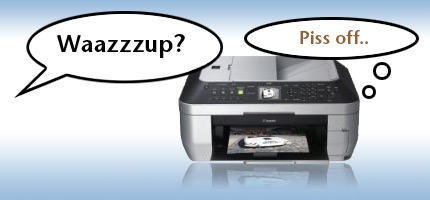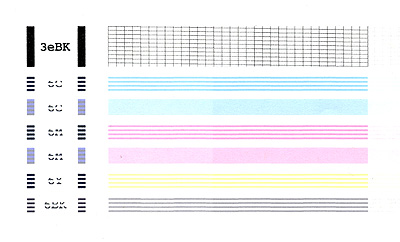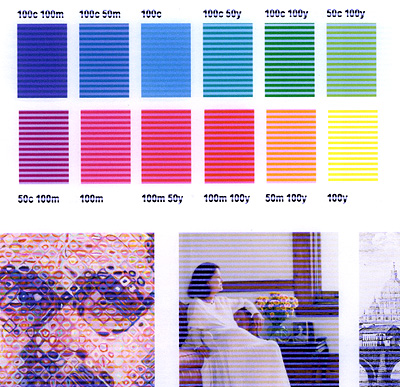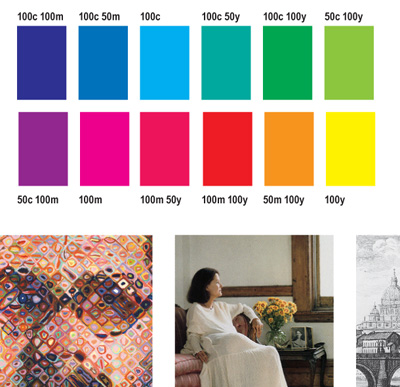
Sorry I haven’t posted in some time. The Studio has been very busy with work and my personal life collided with the business. My wife suffered a dislocated and fractured shoulder at the beginning of October. So I have been taking care of her and doing a lot of housework along with trying to well… work. So not a lot of time for writing blog items. But do have a little something for you.
In early-December I posted this in my personal blog…. And to complete the Tech Fail Trifecta [ joining the failed washing machine and water heater]… My faithful Canon printer started to funk out last night. It began to print thin pale streaks in nice neat precise 3mm stripes. UH oh. After the many cycles of cleaning and test prints, and then a 40 min ride with Canon’s tech support, pretty much convinced me the print head was probably hosed. And a replacement head costs near the cost of replacing the same class printer. So will take a shot at trying to fix it N1NJ4 style before I stick a crowbar in the wallet.
Anyway, for you Geek Squad trainees…

Here’s the test print… those stripey bits are supposed to be SOLID.

This is a bit of a Color Test Document from InDesign.
Shows the CMYK color formulas… yeech. BAD printer.

And from a PDF of the same document, what it’s pretty
much supposed to look something like.
So… that’s My grumble for today. But if we don’t get hosed on the home repairs… maybe a opportunity to upgrade to a better printer…
I posted this item in our holiday note… “And now the office [Studio] printer is getting cranky and disobedient. Kurt has been hunting the web and ebay for parts, to make the technology fail trifecta…”
I ended up replacing the Printer Head in our aging Canon Pixma iP4000, the attempt to clean it proving to no avail. So for about $50 I replaced the print head in the beastie, delivering me from temptation to buy a new printer… like a 13 x 19″ PixmaPro 9000… And of course shortly thereafter, started getting the “Waste Ink Tank is Nearly Full” error… while printing Holiday Cards. So another dive into eBay for discontinued partz. Did score replacement ink absorber pads. Woot. Mind you the “waste ink tank” is actually a nest of SPONGES that comprise most of the base of the printer. When they’re saturated, they’re pretty much done.
About two weekends ago, took the beastie apart and had at it.
EWWWWWWWUUUCCCHHHHH… NASTY.
The amount of ink the nearly dozens of pads of various sizes absorbed was just plain INSANE. Thank the gods I had latex exam gloves on hand. But a couple of very geeky hours, MANY q-tips, and a pile of Newspaper, tissues and paper towels later, I essentially had a refurbished printer. Was worth the attempt, considering how past warranty this thing is. Interesting that the major wear points of the machine wore out practically all at once. They pretty much expect you to buy a new printer by then. HP is probably the worst in this regard, followed by Epson. Those two are the worst for this sort of thing, but Canon is certainly not immune. I imagine Brother and Lexmark are similar.
So what the heck am I about with all this tech drama?
Over the past decade the latest things for the home office/small business computer user are photo-realistic inkjet printers, largely supplanting laser printers in the home and small office. These wondrous devices print at resolutions and print quality that was at one time reserved for very large companies. As recently as ten years ago a high resolution color laser printer cost in excess of $5000, and often required separate computers or Raster Image Processors to run efficiently. The first inkjet printer I purchased for the studio, a mid-range Epson Stylus cost under $300. It’s replacement, the above mentioned Canon Pixma iP4000 next to my working computer cost under $200, and it produces prints as good or better as the corporate behemoths. It’s also obsolete; I can now get a similar class device for under $100. If I buy a new computer from the right vendor, Mac or PC, I can probably get one for free or nearly free.
Why are these manufacturers nearly giving these devices away? This becomes clearer when you have printed out a few hundred pages. These printers require regular feeding of Ink Cartridges. These tiny tanks of ink, two, four, seven or even eight or more at a time, can become very costly, especially if you print many pages. If you print at maximum resolution on ( also pricey) photo or glossy paper, you will run through even more ink. Lower-end printers are absolutely sold at a loss, knowing that you will be back for ink, again and again and again, at very comfortable margins. Furthermore, the specialized papers that give you the best looking prints are not inexpensive. These media costs can drive the cost per page surprisingly high. Before you snap up that bargain in Staples or Office Depot, carefully consider your current and future printing needs.
If you are spending a great deal of money running off short runs of color documents at FedEX/Kinko’s, you can certainly use an in-house printer. But if you are printing dozens of pages or more at a time, look at the current crop of business class Color Laser Printers, basic models can be had for hundreds, and their ink/toner consumption is much more cost effective. This can also be a good solution for short runs of multipage documents such as sales presentations. Low-cost inkjet printers are also tuned for attractive color for digital photos, but are not always appropriate for color proofing.
Bear in mind that inexpensive inkjets also seem to have iffy drivers. And for the lowest cost models, two or three changes of ink, will cost the value of the printer itself. I particularly don’t like the single Tri-color cartridges. These will give you an out of ink error if only ONE of the three colors is low or out… even if you are trying to print in BLACK. I much prefer individual ink cartridges. And it further annoys me that when I have spec’ed 100 percent yellow in a CMYK document, and the printer uses CMYK ink, why are there flecks of cyan and magenta in the yellow? And that 50% gray, has dots of all four colors? Shiny pretty? Sure. Color proof? Get REAL. But I could seriously spin a whole ‘nother rant off that topic.
Anyway…
When you get into hundreds or thousands of copies, that is the time to consider commercial printing, with the additional benefit of the printer’s expertise, broad options and professional quality. With the penetration of Digital printing into copy and small print shops, short run color printing has become much more accessible and cost effective that ever before. The ability to send documents directly to print vendors online, and the capability of many applications to output PDF files directly makes this a much easier and straightforward process than ever. And the Mac, since the introduction of Mac OS X, has the ability to create PDF files from any application that supports the Print function. Sweet.
I could go on, and bore the everlovin’ FRAK out of you, so I’ll save it and leave you with these. Which cover many of the points rattling about in my fevered brain a lot more entertainingly.
Enjoy. Actually, I was thinking more on the lines of – *Fist pump* “YEAH!”
The Oatmeal / Why I Believe Printers Were Sent From Hell To Make Us Miserable
http://theoatmeal.com/comics/printers
YouTube: CollegeHumor Originals / Your Printer is a Brat.
http://www.youtube.com/watch?v=pQGtucrJ8hM
Hi Kurt,
Well written and true words. What do you make of the various “ink- refill” schemes out there, wherein one either takes or sends the cartridge to a company that refills it, or one does so ones self with a handy “kit”, for much less than the cost of a new stoopid cartridge? Gods, I wish they’d standardize the bloody things, too, theres WAY too many kinds, utterly non- interchangeable.
Bill
I am certainly aware of the various ink-refill schemes. Some of them can be startlingly messy pains in the butt. But others can be a economical alternative to pricey ink cartridges, esp. HP’s. But these, and third party ink cartridges, are best for everyday printing, but the third party ink used may be unsuitable for photo or presentation quality printing. One brand I used very successfully for my Epson, didn’t measure up on the Canon, and I had to switch back to OEM ink. Thankfully, Canon’s inks are the least costly of the major manufactures.
Another consideration, is that the printer manufacturers will absolutely toss your warranty if you run into any problems using third party inks or refilled cartridges.
Hi,
I’ve read about lots of people who buy cheap printers repeatedly rather than go to the trouble of repairing one device. Kudos!
I myself have stuck with the same bottom-of-the-range HP for six years. It’s seen me through 2 degrees and printed hundreds of pages. Sadly, sellotape more or less holds the thing together now.
Great links there, by the way.
Thank you! The feedback is appreciated.
[ As I mentioned Color Lasers as a viable alternative for small to medium businesses – this may be of interest – KG ]
Well I stumble on this article. which you might want to review this is a list of hp color printer that have a good cost per page.
Best cost per page hp color laser printers
hope it will provide you with information that you want
Finally, got what I had been looking for!! I’ve really enjoying every little bit of this. Happy I stumbled in to this content! and also I’ve bookmarked to see new stuff for your post.
Aloha! I want to say gracias for an interesting entry about a something I have had an interest in for a long time now. I have been lurking and reading the entries avidly and just wanted to thank you for providing me with some terrific reading material. I anticipate more, and taking a more involved part in the discussions on your site.
This is most useful information. Got lot of tips regarding the same, thank you very much friend post a nice article.
Hello, just stopped by doing some research for my Pixma site. Lots of information out there. Wasn’t what I was looking for, but cool site. Have a good day.
Pingback: Leaving Money on The Table | Fantastic Realities: The Journal